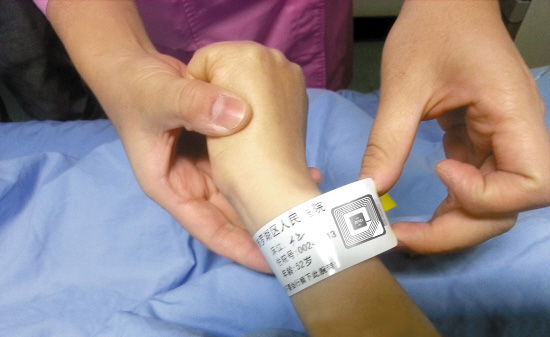Have incremental developments using RFID brought, by stealth, a potential revolution in healthcare?
Sometimes developments happen incrementally until they reach a critical point where significant benefits suddenly become available in a cost effective way.
Healthcare RFID | Hospital
The number of areas where RFID (Radio Frequency Identification) can be used in healthcare to reduce costs as well as improve standards, compliance, patient care, and staff effectiveness have been ballooning over recent times.
We are all familiar with the use of RFID to manage access control, assets and even monitor patient’s movements. Most large healthcare organisations have been utilising many of the above, if not all, for some time now.
Further Developments
Another level of utilising RFID in healthcare has also been around for some time, though the application is still more widely used in the US and Europe than in Australia.
This is where RFID is integrated into equipment to provide a further improvement in automation bringing better compliance, greater cost savings and improved patient care. Two examples are:
RFID Tracking Fridge
? Automated Inventory Management. These internet enabled RFID enclosures provide authorised users with controlled access and real-time inventory management capabilities for pharmaceuticals, implants, tissue and biologics, reagents, cardiovascular products, orthopaedic products and hazardous materials.
? Medication Tray Management. For hospital facilities that manage a large number of medication kits and trays, the ability to ensure that the correct number of the ‘right’ products, within expiry date, are present. This is a leap forward in inventory management and the reduction of human error.
The next level
Now RFID brings, through the use of sensor tags, a new level of patient care combined with improved staff utilisation. Three examples are:
Tracking Patient rolling RFID
Tracking Patient rolling. Using an Internet of Things (IoT) system that detects the well-being of patients by capturing sensor-based data from patient mattresses. This system is able to alert management, and healthcare providers, when a patient leaves their bed as well how often, and when, they turnover – important for the prevention of bed sores. The regular rolling of patients for this reason is not only time consuming and labourious, but disturbing for patients who may be sleeping – and may not need to be rolled over!
Incontinence. This application of RFID has an additional benefit to the usual saving of time, reduction of costs and elimination of errors. The primary benefit here is to support patient dignity. Where incontinence is a likely consideration, such as aged care facilities, checking for wetness several times a day is not only invasive and uncomfortable for the patient but another time consuming task for the staff. A strategically placed peel-and-stick passive UHF RFID sensor tag allows a close proximity check without physical intervention or the patient even being aware the check has been done.
Vital signs monitoring. How useful would it be to be able to detect a patient’s heart rate, blood pressure, and other vital signs without touching the patient? The approach involves a tag being placed in close proximity to the source being monitored (such as a patient’s heart). It can be attached to clothing, or a chip could be sewn directly into an outfit. Although still in the early stages of development (the first prototype testing was completed in April 2017) when fully commercialised the potential is obvious.

